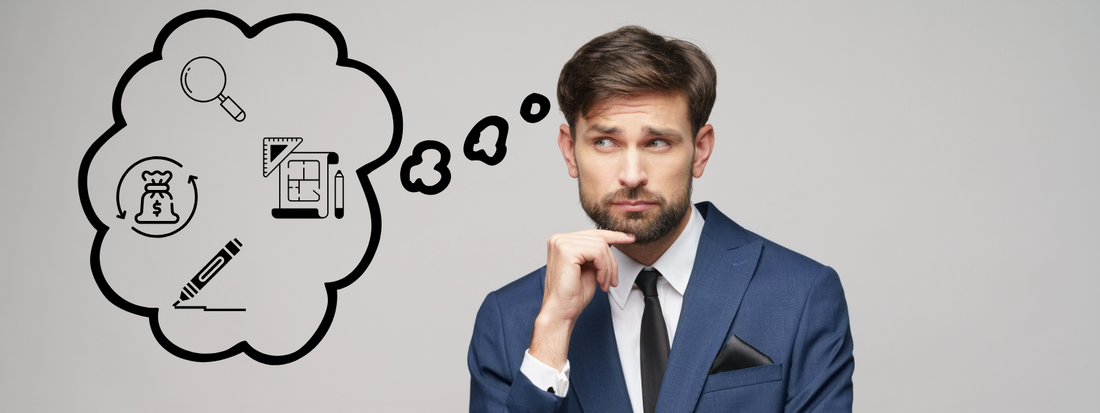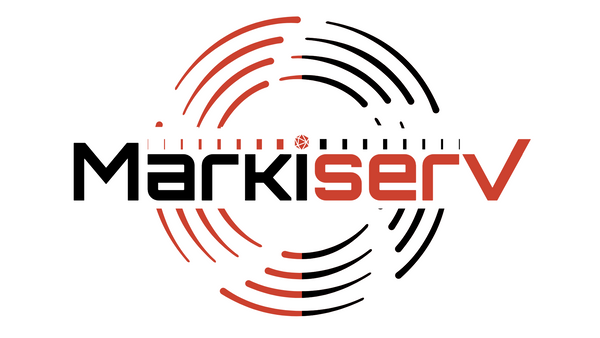
What to Look for in a Graphic Designer
Share
In today’s digital age, the visual identity of your business is more important than ever. Whether you’re a startup looking to establish your brand or an established company aiming to refresh your image, finding the right graphic designer is crucial. But with so many options available, how do you choose the best one for your needs? In this blog, we’ll explore the key factors to consider when searching for a graphic design agency or contractor to help with your business designs.
- Portfolio and Experience

Review Their Portfolio
A graphic designer’s portfolio is a window into their skills, creativity, and style. When evaluating potential designers, take the time to review their past work. Look for diversity in their projects and see if their style aligns with your brand’s vision. A strong portfolio should showcase a range of design elements, including logos, websites, marketing materials, and more.
Consider Their Experience
Experience matters in the world of graphic design. An experienced designer will have a deeper understanding of design principles, industry trends, and client needs. They will also be better equipped to handle complex projects and deliver high-quality results. Look for designers who have worked with businesses similar to yours or have experience in your industry.
- Creativity and Innovation
Assess Their Creativity
Creativity is at the heart of graphic design. A great designer should be able to think outside the box and come up with unique, eye-catching designs that set your brand apart. During the selection process, ask potential designers about their creative process and how they approach new projects. Look for designers who are passionate about their work and are always looking for new ways to innovate.
Look for Innovation
In addition to creativity, innovation is key to staying ahead in the competitive world of design. A designer who keeps up with the latest trends and technologies will be able to offer fresh, modern designs that resonate with your audience. Ask potential designers about the tools and software they use and how they stay updated with industry developments.
- Communication and Collaboration
Evaluate Their Communication Skills
Effective communication is essential for a successful design project. A good designer should be able to clearly articulate their ideas and understand your vision. During the initial consultation, pay attention to how well the designer listens to your needs and how effectively they communicate their thoughts. Look for designers who are responsive, open to feedback, and willing to collaborate.
Assess Their Collaboration Abilities
Design projects often involve collaboration with other team members, such as marketers, developers, and content creators. A designer who can work well with others and integrate their designs seamlessly into larger projects will be a valuable asset. Ask potential designers about their experience working in collaborative environments and how they handle feedback and revisions.
- Technical Skills and Expertise
Check Their Technical Proficiency
A great graphic designer should have a strong command of design software and tools. Look for designers who are proficient in industry-standard software such as Adobe Creative Suite (Photoshop, Illustrator, InDesign) and other relevant tools. Ask potential designers about their technical skills and how they stay updated with new software and technologies.
Evaluate Their Expertise
In addition to technical skills, expertise in specific design areas can be a significant advantage. For example, if you need a designer for web design, look for someone with experience in user interface (UI) and user experience (UX) design. If you need branding services, look for a designer with a strong background in logo design and brand identity. Assessing their expertise will ensure you find a designer who can meet your specific needs.
- Understanding of Your Brand and Industry
Look for Industry Knowledge
A designer who understands your industry will be better equipped to create designs that resonate with your target audience. Look for designers who have experience working with businesses in your sector or who have a strong understanding of your industry. This knowledge will enable them to create designs that are relevant, impactful, and aligned with industry standards.
Assess Their Understanding of Your Brand
Your brand is unique, and your designer should be able to capture its essence in their designs. During the selection process, ask potential designers about their approach to understanding your brand. Look for designers who take the time to research your business, ask insightful questions, and demonstrate a genuine interest in your brand’s story and values.
- Budget and Pricing

Consider Your Budget
Budget is an important factor when choosing a graphic designer. While it’s essential to find a designer who fits within your budget, it’s also important to consider the value they bring to the table. A higher-priced designer with extensive experience and a strong portfolio may offer better long-term value than a lower-priced option with limited experience.
Evaluate Their Pricing Structure
Different designers have different pricing structures, such as hourly rates, project-based fees, or retainer agreements. Evaluate the pricing structure of potential designers and choose one that aligns with your budget and project needs. Be sure to ask about any additional costs, such as revisions, licensing fees, or rush charges, to avoid surprises down the line.
- Reviews and Testimonials
Read Client Reviews
Client reviews and testimonials can provide valuable insights into a designer’s reliability, professionalism, and quality of work. Look for designers with positive reviews and a track record of satisfied clients. Pay attention to any recurring themes in the reviews, such as timely delivery, responsiveness, and creativity.
Ask for References
In addition to reading online reviews, ask potential designers for references from past clients. Speaking directly with previous clients can give you a better understanding of the designer’s strengths and weaknesses and help you make an informed decision.
- Flexibility and Adaptability
Assess Their Flexibility
The design process can be unpredictable, and it’s important to find a designer who is flexible and adaptable. Look for designers who are open to feedback, willing to make revisions, and able to pivot when necessary. A flexible designer will be better equipped to handle changes and deliver a final product that meets your expectations.
Evaluate Their Adaptability
In addition to flexibility, adaptability is crucial for staying relevant in the ever-evolving world of design. A designer who can adapt to new trends, technologies, and client needs will be a valuable asset to your business. Ask potential designers about how they stay updated with industry changes and how they incorporate new ideas into their work.
Conclusion
Finding the right graphic designer for your business is a critical decision that can have a lasting impact on your brand’s success. By considering factors such as portfolio and experience, creativity and innovation, communication and collaboration, technical skills and expertise, understanding of your brand and industry, budget and pricing, reviews and testimonials, and flexibility and adaptability, you can make an informed choice that meets your needs and exceeds your expectations.
At Markiserv, we pride ourselves on offering dedicated design services that deliver exceptional value and results. Our team of experienced designers is committed to understanding your brand, collaborating effectively, and creating innovative designs that drive your business forward. Contact us today to learn more about how we can help you achieve your design goals.
